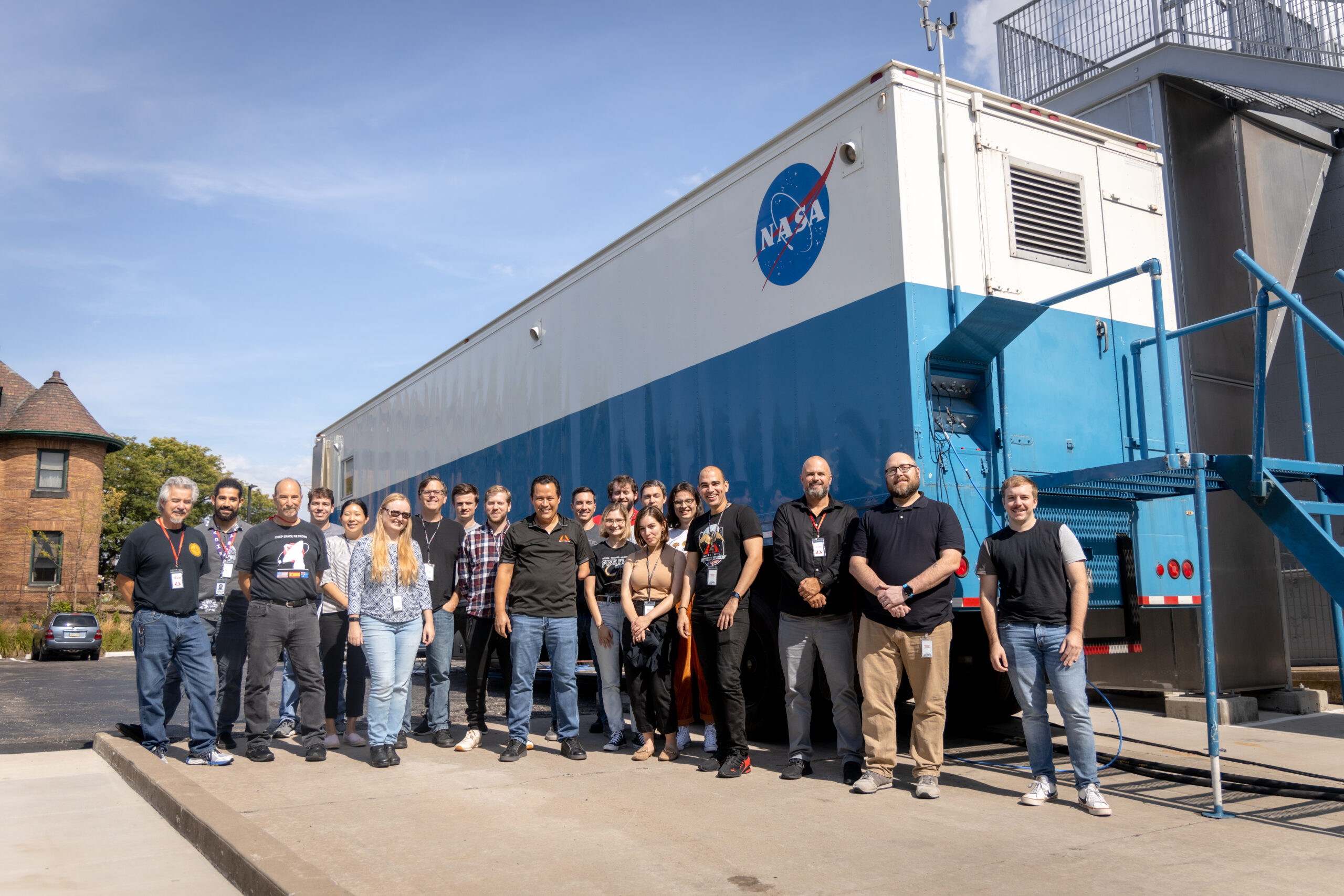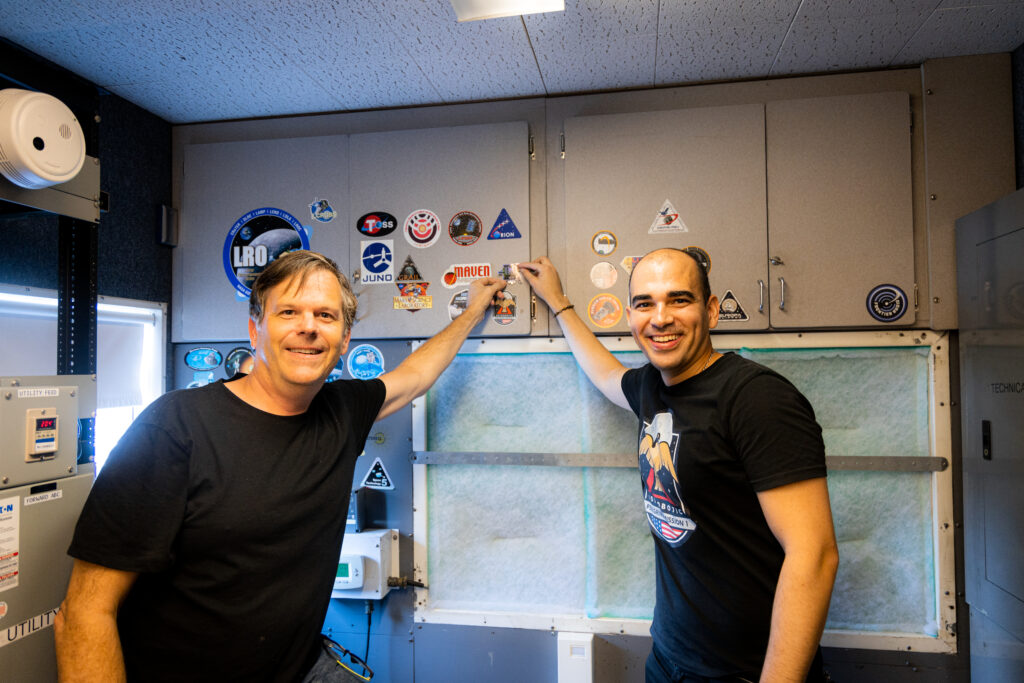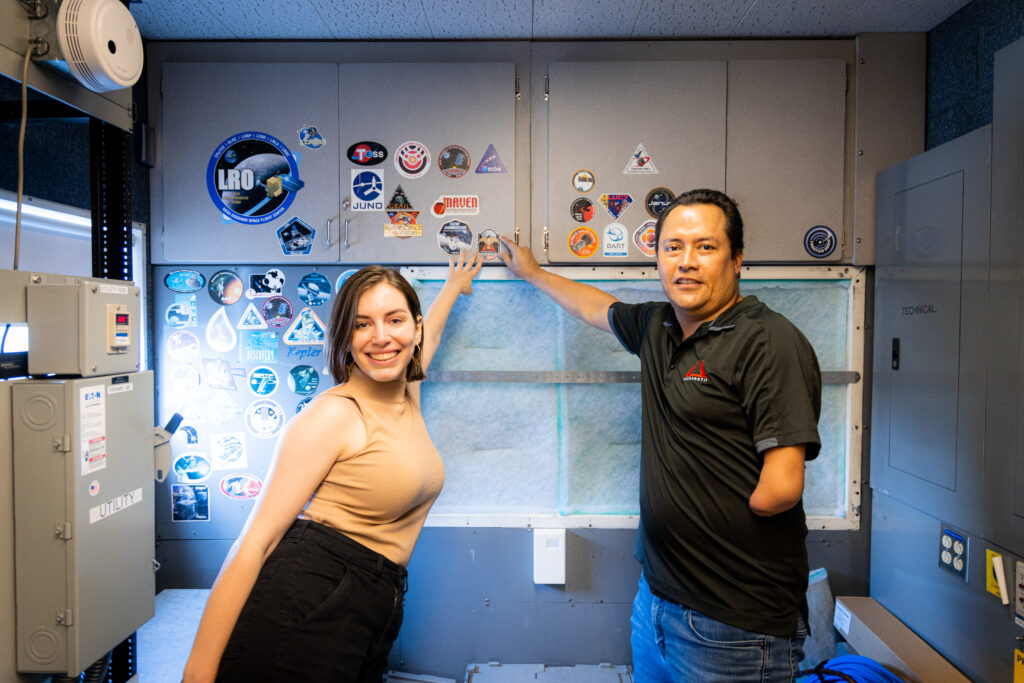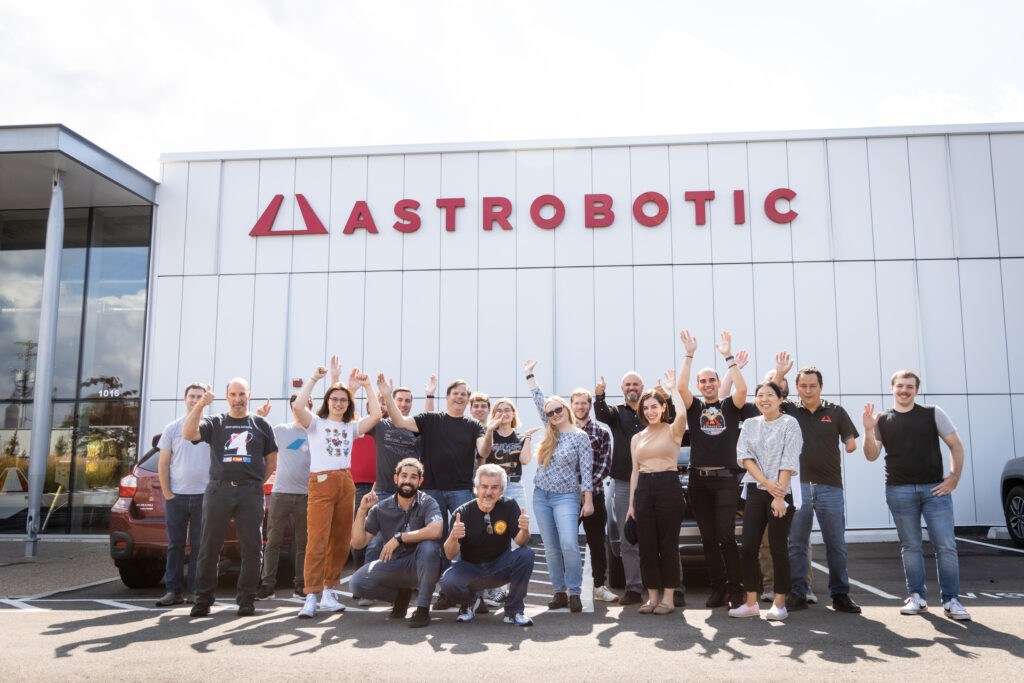
August 16, 2022, Pittsburgh, PA – Last month, the Deep Space Network (DSN) from NASA’s Jet Propulsion Laboratory (JPL) successfully completed end-to-end test communications with Astrobotic’s Peregrine lunar lander. These tests demonstrated compatibility with space-to-ground communications that will occur during Peregrine’s mission to the Moon.
After the Peregrine spacecraft separates from United Launch Alliance (ULA)’s Vulcan Centaur rocket, Peregrine will be utilizing DSN’s 34-meter dishes at Canberra, Australia; Madrid, Spain; and Goldstone, California. These dishes are the same suite used to communicate with the James Webb Telescope, as well as historic missions such as New Horizons, Solar Parker Probe, InSight, Juno, and MAVEN.
”Our team has completed a major test with the DSN global network and Astrobotic’s communication systems including flight avionics, ground support software, and mission ops infrastructure. We successfully passed commands, received telemetry, and determined ranging performance. The sense of accomplishment was palpable when the screens of our Mission Control center were illuminated by real telemetry coming from our spacecraft,” said Eduardo Lugo, Astrobotic Lead RF Engineer.
Testing with Peregrine and DSN was conducted over two weeks, culminating in confirmation that Peregrine can successfully transmit data and receive commands through DSN and to Astrobotic’s Mission Control Center in Pittsburgh, Pennsylvania.
“This success marks a major program milestone for Peregrine mission as well as for Astrobotic as a company. Confirming the technical capabilities of our team and our custom-built avionics and communications systems in a sophisticated, system-level spacecraft test was a tremendous success. Seeing the entire team overcome test challenges felt close to flying the actual mission. This is a great accomplishment for our historic trip to the Moon,” says Ander Solorzano, Astrobotic’s Lead Systems Engineer and one of the Flight Directors for Peregrine Mission One.
Peregrine’s progress continues as its Space Robotics team also successfully integrated the OPAL Terrain Relative Navigation (TRN) compute hardware and associated camera to Peregrine’s flight decks. TRN is designed to enable precise and safe landings on the Moon, Mars, and beyond. The system will be leveraged again on Astrobotic’s Griffin Mission One. In addition to TRN, all twenty-four of Peregrine’s payloads have also been integrated with its flight decks.
The Peregrine spacecraft continues its final assembly at Astrobotic’s headquarters and is currently on schedule for final environmental testing before delivery to the launch site in Cape Canaveral, Florida.




